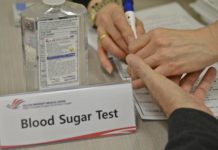
For every physician who has ever been baffled by a patient’s response – or the lack of it – to an antibiotic, procalcitonin may be the marker to save the day.
In February 2017, the United States Food And Drug Administration approved the blood infection marker procalcitonin for guiding antibiotic therapy in patients with acute respiratory infections. Procalcitonin is a 116 amino acid precursor of calcitonin that is secreted by the C cells of the thyroid gland. Procalcitonin concentration is normally less than 0.05ng/ml but in response to bacterial infection it is secreted in large quantities. It has an early and highly specific increase in response to systemic bacterial infections and sepsis. It is detectable within 2-4 hours upon an infectious insult and peaks within 6-24 hours, and remains elevated till the resolution of infection.
A recent meta-analysis of patients data from 26 randomised controlled trials was published in the Lancet, Infectious Diseases to assess the safety of procalcitonin guided treatment in patients with acute respiratory infections from different clinical settings.Data was collected of 6708 patients from 26 eligible trials in 12 countries.The meta-analysis showed that use of procalcitonin to guide antibiotic treatment reduces antibiotic exposure and side effects, and improves survival.
In several controlled clinical studies, procalcitonin level estimation on hospital admission was found to substantially reduce the initiation of antibiotics in low risk situations like acute exacerbation of chronic obstructive airway diseases and bronchitis. Monitoring of antibiotic treatment by serum procalcitonin levels in more severe infections like pneumonia and sepsis have been found to result in shorter duration of antibiotic treatment with early cessation of therapy.
Procalcitonin has also been found to be useful in monitoring of antibiotic use in patients with urinary tract infections, meningitis and patients with heart failure with possible superadded infection like pneumonia.These strategies appear to be safe without increasing the risk of mortality, recurrent infections, or treatment failure. Monitoring of procalcitonin kinetics have also proved to have prognostic value correlating with disease severity in abdominal infections and pancreatitis, and resolution of sepsis.
But there are limitations in terms of suboptimal sensitivity and specificity which can lead to false positive and false negative results. According to Nebraska Medicine PCT (procalcitonin) Guidance, procalcitonin may be elevated in non bacterial stressful conditions (like trauma, surgery, cardiac shock, burns), patients with severely compromised renal functions (End-Stage Renal Disease on haemodialysis), malaria and fungal infections, neoplasms, organ perfusion abnormalities, autoimmune diseases (vasculitis, acute graft vs host disease), treatment with agents that stimulate cytokine levels (alemtuzumab , granulocyte transfusion) and newborns (less than 48 to 72 hours). Localised infections also do not result in rise in procalcitonin levels in blood.
Procalcitonin levels when used in combination with clinical assessment and conventional diagnostic markers like blood cultures can be effective in helping clinicians in deciding for early discontinuation or reduction of antibiotic therapy duration, risk stratification and monitoring of sepsis and septic shock , and assist in monitoring of response to antibiotics in sepsis and bacterial infections. In view of widespread emergence of bacterial resistance to multiple antibacterial agents , procalcitonin can help in efforts to reduce the unnecessary and prolonged use of antibiotics in self limiting, non bacterial and resolving diseases.













